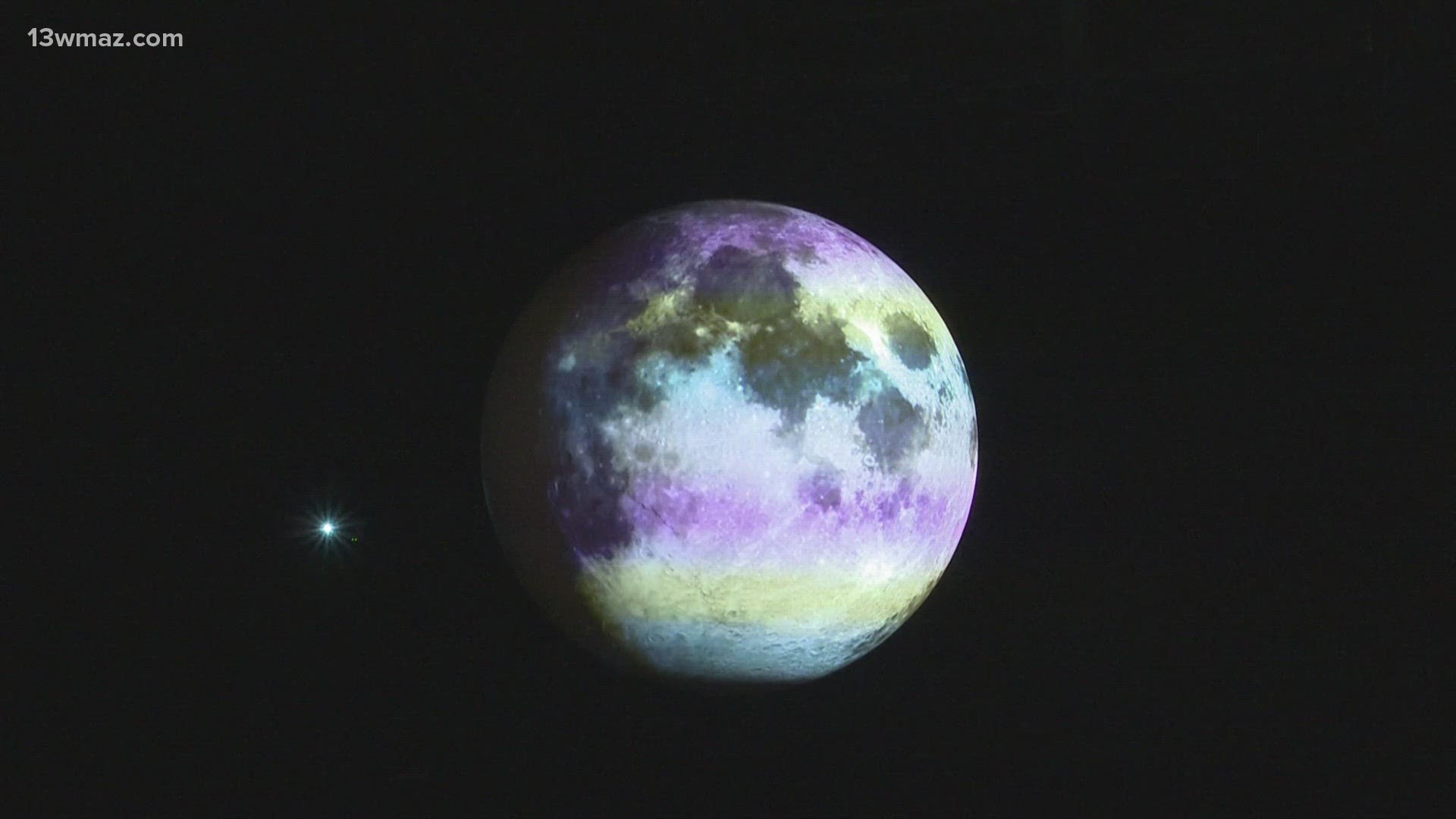MACON, Ga. — There's a lot going on in the atmosphere this week. But one thing you might have not heard about? The full super blue moon.
13WMAZ Junior journalist Kensli Johnson checked in with some local scientists to explain.
According to the National Aeronautics and Space Administration – also known as NASA – we will see a full super blue moon this week.
Full moons happen every month, but why is this a super blue moon?
To figure it out, we talked to a local expert on lunar activity. Matt Marone teaches physics at Mercer University.
But first - why is this moon called a blue moon?
“So when you have two full moons in a month, then that's considered a blue moon,” Marone said.
At some time of the year the moon is a little closer to the earth and at other times it's a little further away from the earth.
“We call those perigee and apogee. So at a perigee moon, the moon is closer to the earth than it would be on average,” Marone said. “And an apogee moon, it would be a little farther than average.”
We're paying attention to the skies for another reason this week.
Hurricane Idalia is approaching and, according to the 13WMAZ weather team, it is expected to bring wind, rain and – most importantly for those looking to get a glimpse of the blue moon – a lot of cloud cover.
According to our weather team, that cloud cover will likely cover up your chances of seeing the super blue moon.
“Unfortunately, the possibility of seeing it when it is at its fullest and brightest is not that all that great, even with Idalia moving away, there's still going to be clouds on the back side of the storm,” our Meteorologist Alex Forbes said.
So, the chances of seeing the super blue moon this time around are pretty slim. But there will be two super blue moons hitting Central Georgia. So, you can catch the next super blue moon in January and March 2037!
13WMAZ’s Junior Journalist Kensli Johnson brought you this report.

